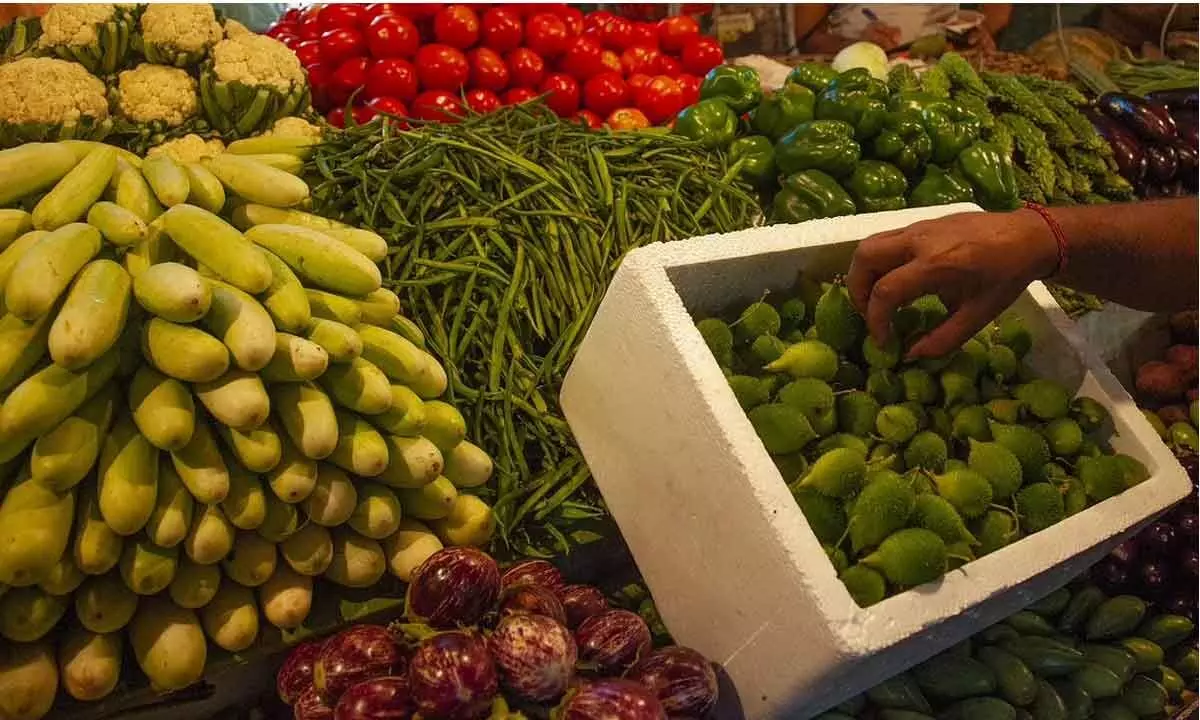Unseasonal rains likely to keep food prices volatile
The unseasonal rains in different parts of country up to 700 per cent in cereal producing States could have a significantly large impact on cereal and vegetable prices.
image for illustrative purpose

The unseasonal rains in different parts of country up to 700 per cent in cereal producing States could have a significantly large impact on cereal and vegetable prices.
In 2019, unseasonal rains that were much lower in proportion had pushed food prices up firmly by 3 per cent over the 4 months ended Jan'20. However, food inflation cooled soon after with vegetable prices significantly declining by Mar'20.
The problem however, as per Ecowrap finding, continued with cereal prices at high levels as such prices are sticky downwards and takes time to mean revert. Due to unseasonal rain pattern and frequency being witnessed across major states now, surge in food inflation may lead to inflation for December hover above seven per cent and the quarterly average should come around seven per cent.
The CPI inflation jumped to a sharper than expected, five month high 7.4 per cent in September, primarily driven by food inflation.
Food inflation spiked to a 22 month high 8.4 per cent in September, with a sharp sequential upmove in vegetables, cereals and spices. The excessive rainfall in early October may adversely impact the Kharif harvest and delay Rabi sowing, thereby posing a material upside risk to the food inflation outlook. However, the impact of the same on the YoY food inflation prints is likely to be partly mollified by the high base that lies ahead for H2 FY23.
On a positive note, the sequential momentum in miscellaneous items, which includes various services, remained stable at 0.4 per cent in September.
Another rate hike is certain in the December MPC review, after the uncomfortable inflation print of 7.4 per cent for September. The quantum of the next rate hike will be determined by how much the inflation print recedes in October and the strength of the GDP growth for Q2 FY23.
Although broadly in line with expectations, the CPI data continues to remain elevated. The surge in prices of cereals, vegetables and pulses is continuing into October as well. The unseasonal rains are further expected to keep the food prices volatile. Icra expects RBI to hike repo rate by 35-50 bps in the December policy, with the next move being more data dependent.
High-frequency mandi prices indicate that prices of perishables could increase going forward as well. However, global commodities (ex-energy) on an average are easing, which, if sustained, should act as a moderating influence on headline inflation. But watch out for near-term offsetting factors which may come from food owing to unseasonal rains, sticky motor fuel prices, and higher kerosene prices, INR weakness, etc. With domestic demand fairly resilient so far, core CPI pressures may remain reasonably sticky in near-term sequentially.
That said, lower imported inflation on net and base effect should directionally still imply lower inflation on YoY basis in 2HFY23 vs 1HFY23. But Emkay report says, this will unlikely to derail the RBI's tightening path as inflation still remains elevated.

